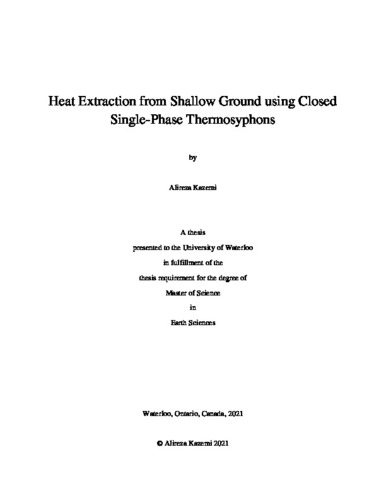| dc.description.abstract | Artificial ground freezing could be costly. Except for drilling and installation costs, they may also include maintenance and electricity consumption. What if we can build a device that naturally works without a need of external energy? Closed thermosyphons filled with a working fluid (antifreeze) that has a proper thermal conductivity can be the solution. Whether there is a need for heat extraction for a greenhouse area or we intend to freeze the ground artificially, simple closed pipes installed under the ground can absorb heat from the ground (heat source) and dump it into the air (heat sink). A portion of the pipe is installed in the soil while the other one is in contact with the ambient air. The antifreeze’s temperature would be a value between the soil’s and the air’s. Thus, the heat transfers from the high temperature zone, soil, to the low temperature zone, wellbore (conduction), it flows through the pipe by natural convection, travels through the pipe’s casing (conduction) and finally into the air (convection). A set of geometric parameters (i.e., heated length, cooled length, inner diameter) of the pipe are subjects to study. Also, the impact of air temperature changes and soil properties are of interest. First, an analytical model is employed to model one single pipe. The next section entails a 2D model simulating multiple pipes. The results show that increasing the cooled length and the diameter makes the heat transfer rate high. It also causes the device to work in higher temperature differences between up and down inner walls of
the pipe. Depending on the depth should be involved in freezing, the length under the ground (heated length) is determined. A high heated length entails a high soil-water content that tends to freeze. Although higher heat content is extracted in this situation, the radial development of freezing would be smaller. With regard to the soil properties, the minimum temperature of the ground is obtained when the soil’s conductivity is maximum, while its porosity, density and specific heat are minimum. The air temperature has the most significant impact on the performance. A low air temperature improves the performance in every aspect. However, it is worthwhile noting that a device in such situation works in high temperature differences and so the required changes in other parameters should be considered. | en |

